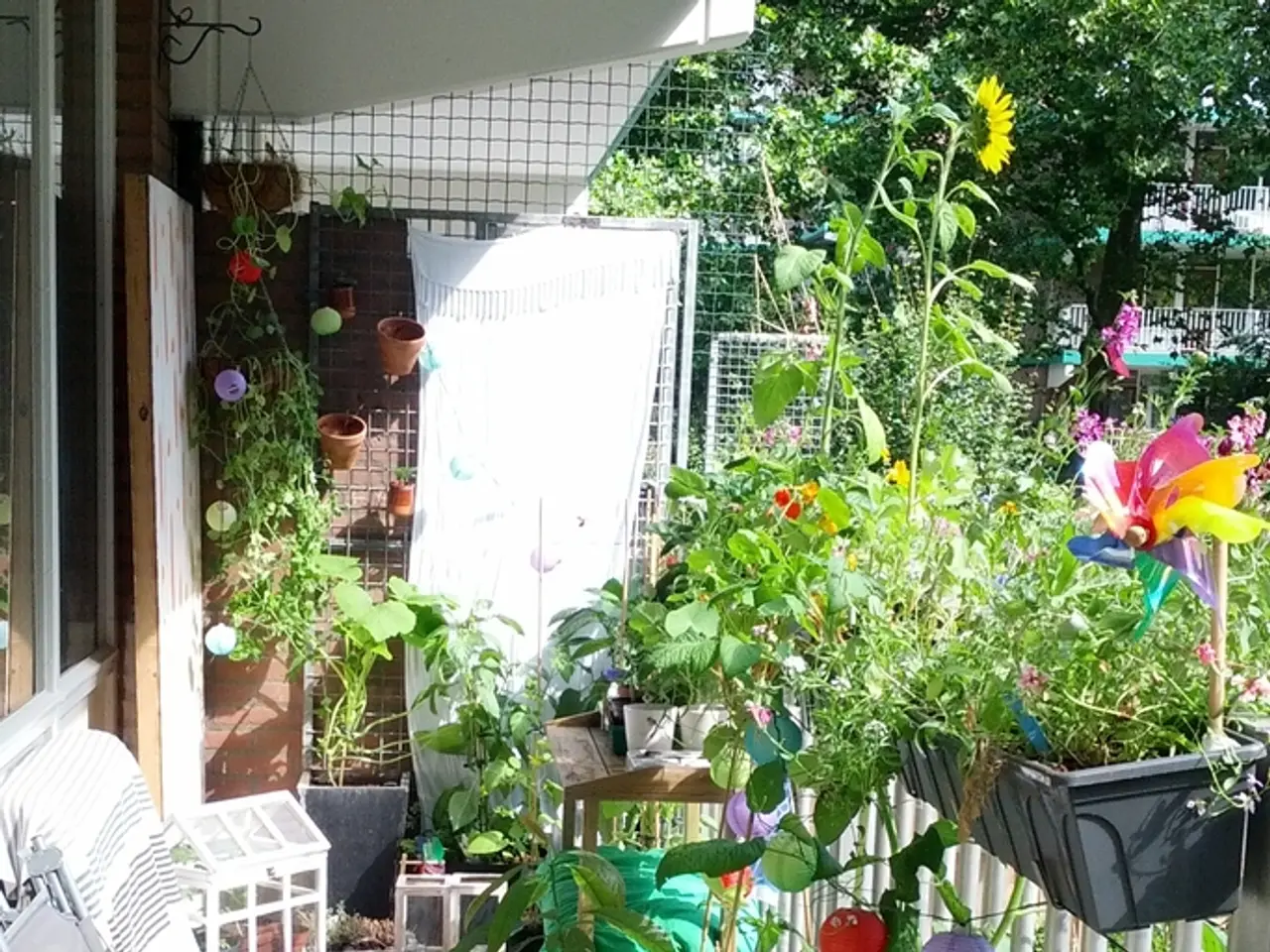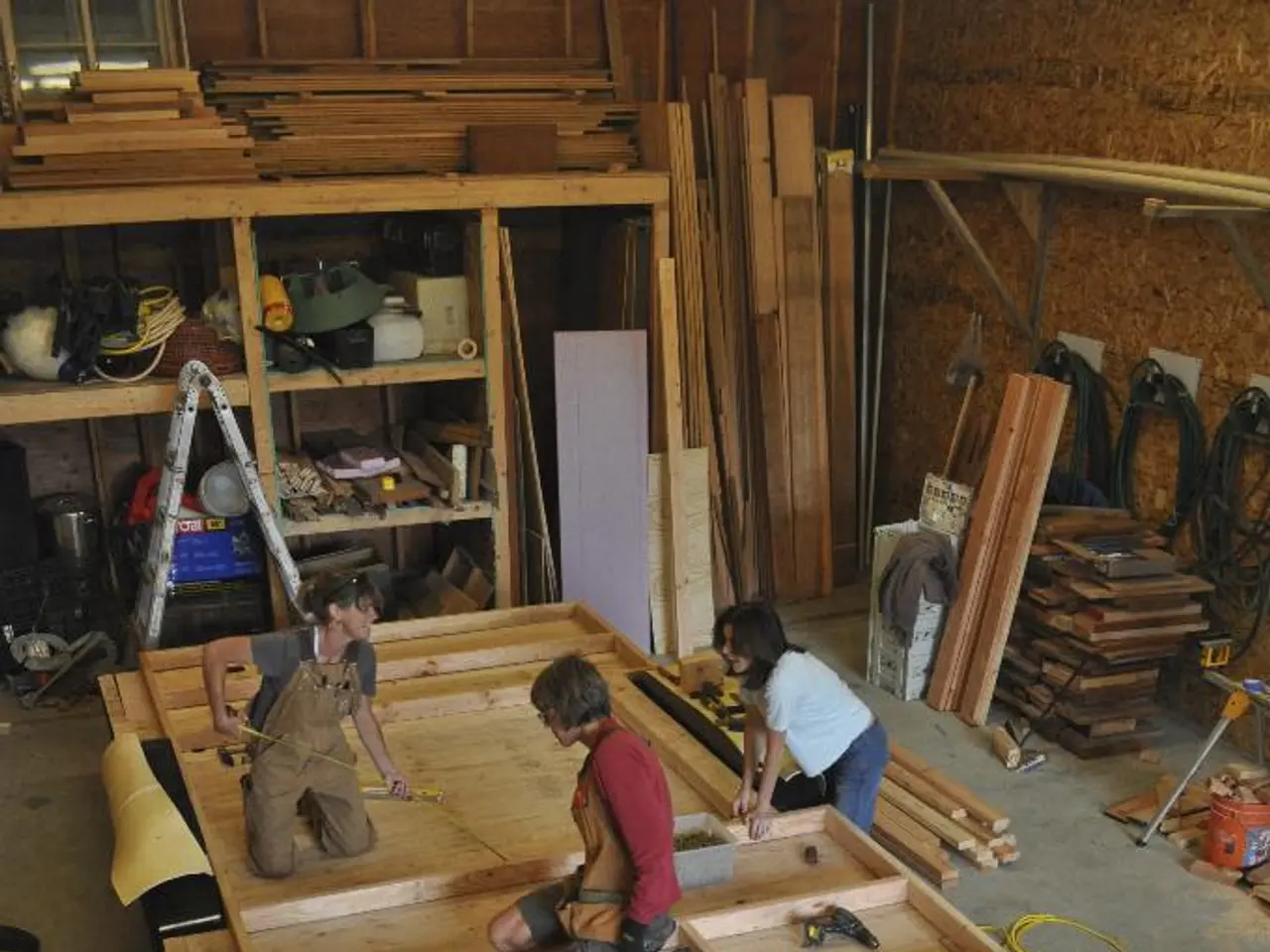Desert Flora's Tenacity: How Plants Thrive in Inhospitable Ground Conditions
Improving Desert Gardening: A Guide to Enhancing Soil Drainage
Desert gardening presents unique challenges, but with the right techniques, it can be a rewarding hobby. To create a thriving desert garden, it's essential to focus on improving soil drainage and water retention.
Firstly, to address the low levels of organic matter in desert soil, peat moss and compost can be used to amend the soil and provide essential nutrients. Adding well-decomposed compost, biochar, and organic amendments like aged manure or leaf litter helps improve soil structure, moisture retention, and infiltration, transforming poor desert soils into more porous and water-retentive substrates.
Mixing in coarse materials such as sand, pumice, perlite, or lava rock further improves drainage by preventing soil compaction and promoting airflow around plant roots. This combination will enhance soil drainage capabilities while improving water retention, supporting healthy desert gardening.
For desert soils that tend to be alkaline and have low organic content, a multi-season strategy of planting hardy cover crops to build organic matter and periodically incorporating these amendments with irrigation helps the soil gradually improve water absorption and retention while maintaining efficient drainage.
Using cactus and succulent-specific potting mixes or amending garden soil with quick-draining components like perlite or pumice is highly recommended for container or in-ground desert plants to prevent root rot caused by waterlogged conditions.
Cacti and succulents require ample space to grow and should not be crowded. They thrive in sunny environments and well-drained soil. It is recommended to use a cactus-specific fertilizer during the growing season, being careful not to overfeed them.
Desert plants, such as cacti and succulents, have the ability to store water in their leaves, stems, and roots. However, they still require judicious watering. Overwatering can lead to root rot, so it's crucial to maintain adequate moisture without overwatering.
Some desert plants, like mesquite, creosote bush, and yucca, have deep root systems that burrow into the soil in search of water. These hardy shrubs and grasses, along with others like dropseeds, three awns, burrow grass, Joshua trees, yucca, desert orchids, and little bluestem, also thrive in arid conditions.
In desert gardens, it is crucial to ensure proper soil drainage to prevent waterlogging, which can be detrimental to desert plants. To enhance soil drainage, choose sandy, well-drained soil, create a slope, use raised beds, incorporate organic matter, utilize mulch, plant in containers, and test your soil.
The mineral content in desert soils is typically high, while the organic matter is scarce, often comprising only about 1% or less. This high mineral content often gives desert soils a sand-like texture and crumbles even when wet. The pH level of desert soils tends to be highly alkaline, with a pH level above 7. This can be challenging for non-native plants, as they may lack essential nutrients such as copper, zinc, manganese, iron, and phosphorus. If your soil pH is too high, you can use elemental sulfur to lower it.
Cacti can withstand some cold temperatures but benefit from protection during extreme cold. Desert plants require supplemental irrigation, especially during the establishment phase, and watering techniques are crucial to promote deeper root growth.
In summary, a combination of amending the soil with organic matter, coarse materials, and hardy cover crops, along with judicious watering and the use of cactus-specific fertilizers, can transform desert soils into thriving habitats for a variety of desert plants. By following these guidelines, you can create a beautiful and resilient desert garden.
While focusing on improving soil drainage is crucial for desert gardening, it's equally important to consider the use of environmental-science principles such as home-and-garden solutions. For example, amending desert soil with peat moss, compost, and coarse materials like sand or perlite can provide essential nutrients and enhance soil structure for a more porous and water-retentive substrate, thereby supporting a healthy lifestyle that embodies environmental responsibility.
Moreover, in addition to enhancing soil drainage, choosing desert plants that have deep root systems, such as mesquite or yucca, helps promote a sustainable home-and-garden setup. These plants thrive in arid conditions, requiring minimal water and contributing to the conservation of our environmental-science resources for a lifestyle that harmonizes with nature.




